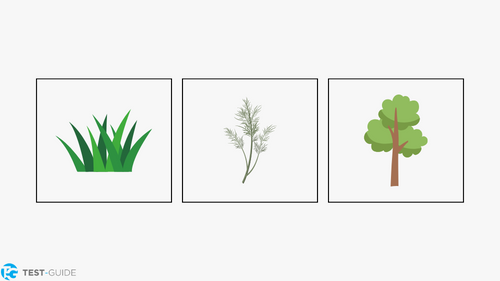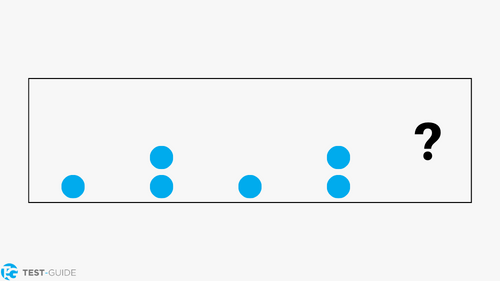All CogAT Practice Tests
Taking a CogAT practice test is one of the best ways to prepare.
The following free CogAT practice tests have been updated to reflect questions that your child will see on the real test.
Recommended CogAT Prep
If you want some more in-depth study materials, try our recommended CogAT prep course.
What is the CogAT Test?
The CogAT is a set of exams administered to children in grades K-12. The test is multiple-choice and is developed in a way to test a student’s academic aptitude. It reveals where a student stands in comparison to their peers.
Students can expect to see three sections (known as batteries):
- Verbal Battery
- Quantitative (Math) Battery
- Nonverbal Battery
The only part of this test that isn’t standardized is the way in which these batteries are administered. Some schools put them all together while others will have a separate test for each.
CogAT Test Structure
The CogAT exam is administered to grades K-12 so each version will be slightly different. Overall, all versions follow a consistent structure.
| Battery | Question Types | Time Limit (Min) | Topics Tested |
|---|---|---|---|
| Verbal Battery | Multiple-Choice | 30-45 | Picture / Verbal Analogies Sentence Completion Picture/Verbal Classification |
| Quantitative Battery | Multiple-Choice | 30-46 | Number Analogies Number Puzzles Number Series |
| Non-Verbal Battery | Multiple-Choice | 30-47 | Figure Matricies Paper Folding Figure Classification |
Students will be administered a different edition depending on their grade level. Grades K-2 are given the Primary Edition while students in grades 3-12 are given the Multilevel Edition.
This makes it important to find the right free CogAT test – where we come in!
Verbal Battery Section
This section of the CogAT tests a student’s flexibility and fluency in solving verbal problems. You will see problems on topics like:
- Picture/Verbal Analogies
- Sentence Completion
- Picture/Verbal Classification
All of these topics play valuable roles in critical thinking, reading comprehension, writing, communication, and pretty much all verbal skills.
Quantitative Battery Section
This section of the exam test student’s reasoning skills. You will see problems on topics like:
- Number Analogies
- Number Puzzles
- Number Series
Questions in this section all deal with the quantitative concepts where students are expected to show their ability to organize and provide context to unordered numerical and mathematical symbols.
Nonverbal Battery Section
The nonverbal battery section tests a student’s ability to organize geometric shapes and figures. You will see problems on topics like:
- Figure Matrices
- Paper Folding
- Figure Classification
This section forces students to prove that they understand context by inventing strategies that are used to solve novel problems. Students will have to be flexible in their implementation of these strategies.
There is no need to test specific vocabulary words or subjects since the CogAT does not evaluate subject comprehension.
CogAT Levels
The CogAT is split into different levels. Each level corresponds to a different grade level. View the table below to see the different levels.
| Grade | CogAT Level | Number of Questions | Time Limit |
|---|---|---|---|
| Kindergarten | Level 5/6 | 118 | 112 Minutes |
| 1st Grade | Level 7 | 136 | 112 Minutes |
| 2nd Grade | Level 8 | 154 | 122 Minutes |
| 3rd Grade | Level 9 | 170 | 90 Minutes |
| 4th Grade | Level 10 | 176 | 90 Minutes |
| 5th Grade | Level 11 | 176 | 90 Minutes |
| 6th Grade | Level 12 | 176 | 90 Minutes |
| 7th – 8th Grade | Level 13/14 | 176 | 90 Minutes |
| 9th – 10th Grade | Level 15/16 | 176 | 90 Minutes |
| 11th – 12th Grade | Level 17/18 | 176 | 90 Minutes |
CogAT Test Prep and Study Tips
The key to creating a successful study regimen with children is to make it fun and exciting. Don’t be afraid to switch things up from time to time! Study sessions should be done in short windows with fun activities in between.
Study sessions can be made fun by presenting them as games rather than simply asking questions. Below are two proven methods to help your child prepare for the CogAT test.
1. Exercise, Sleep, and Nutrition are Essential
These are the three keys to acing any test for both children and adults! Physical activities get the mind focused, making it much easier to learn. Brain fog from a lack of physical activity makes it much more difficult to retain knowledge.
Additionally, getting the right amount of sleep has the same impact. We cannot overemphasize this enough! Do not ever let your child sacrifice sleep to study more. They won’t retain the information. Also a quick study session before bed is highly effective.
We feel the biggest and often most overlooked of all three is nutrition. Certain foods promote brain health and these need to be a part of your child’s diet leading up to important exams. Fruits, vegetables, and nuts are all great choices. Nutrition is especially important on test day.
2. Have Your Child Take a CogAT Practice Test
Practice tests will make test day much easier on your child by removing the stress of uncertainty. Children love familiarity so having them take practice tests on a consistent schedule will ensure they are not caught off-guard on test day.
While a practice test is certainly not the real thing, it’s possible to simulate the experience. Try to have your child take it at the same time of day as the real test will occur. Again, children love familiarity.
Frequently Asked Questions
How do I prepare for the CogAT test?
The best answer to this question is to have your child take a practice test. Yes, this has been mentioned several times in this guide but that’s only to emphasize just how big of an impact it will have on their success.
Additionally, setting up a consistent study schedule will also help your child’s ability to retain information. Children love consistency.
Finally, getting the proper sleep and replacing junk food with brain foods will also facilitate learning.
What is a good score on a CogAT test?
The CogAt utilizes two specific measurable when calculating a child’s score – age norms and grade norms. Both are designed to weight a student’s score against their peers.
Age norms compare a child’s score to others who are the same age, thus comparing their cognitive abilities to other children of the same age range.
Grade norms are used to assess a student’s score based on their current grade level by comparing it to other test takers who are in the same grade.
The process used for scoring is as follows:
- Raw Score is calculated based on the results of the test.
- Raw Score is then converted into a Universal Scale Score (USS). Additionally, this is broken down into all three batteries.
- Each battery score is further broken down into a Standard Age Score (SAS).
- A student score profile is created using these metrics.
What is considered a “good score” is dependent on how other students perform so no direct answer can be given here.
What questions are on a CogAT test?
There are three batteries (sections) found on the CogAt – Verbal Battery, Quantitative Battery, and Nonverbal Battery. Each of these sections has different types of questions so the best way to address this question is to look at a free practice test to view some CogAT sample questions
With that said, here are some of the types of questions to expect:
- Verbal Battery: Picture/verbal analogies, sentence completion, and picture/verbal classification.
- Quantitative Battery: Number analogies, number puzzles, and number series.
- Nonverbal Battery: Figure matrices, paper folding, and figure classification.
Can you study for the CogAT?
Yes! CogAT test prep is all about making your child familiar with the contents and layout of the test. Practice makes perfect! It’s also recommended that study time be filled with fun activities that balance learning with engagement!
Finally, when having your child take a CogAT practice test, make sure it’s done at the same time of day as the real test.



